#Fresh herbs in india
Text
Find the Best online Leafy Green Vegetables in Delhi | In Hydro Greens
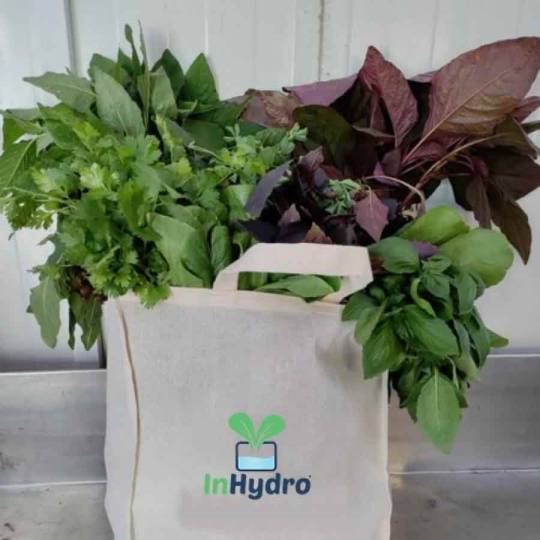
Eating a diet rich in leafy greens can offer numerous health benefits including reduced risk of obesity, heart disease, high blood pressure, and mental decline
Here are 10 of the healthiest leafy green vegetables to include in your diet.
Amaranth Greens
Kale
Arugula
Chinese Cabbage
Fenugreek Green
Hydroponic Bok choy
Lettuce Green
Iceberg Lettuce
Hydroponic Spinach
Lettuce Green
#Salad box online#salad box near me#fresh salad box#Leafy greens in india#Best leafy greens#Fresh herbs in india#Microgreen salad near me#Buy microgreens#Fresh herbs vegetable#Exotic veggies online#Exotic vegetables in india#Buy exotic vegetables#Buy exotic vegetables online#Fresh cut vegetables near me#Fresh vegetables online#Online cut vegetables and fruits#Fresh cut veggies and fruits#Diced vegetables online#Peeled vegetables and fruits#Buy cut vegetables and fruits
2 notes
·
View notes
Text
ASIAN RECIPE
Asian recipes are renowned for their diverse flavors, vibrant colors, and rich cultural heritage. From the fragrant curries of India to the delicate sushi of Japan, Asian cuisine offers a delightful array of tastes that captivate the senses. The use of fresh herbs, spices, and a harmonious blend of sweet, sour, salty, and umami flavors defines the essence of Asian cooking. Each region boasts its unique culinary traditions, with staple ingredients like rice, noodles, and tofu taking center stage in many dishes.
#Asian recipes are renowned for their diverse flavors#vibrant colors#and rich cultural heritage. From the fragrant curries of India to the delicate sushi of Japan#Asian cuisine offers a delightful array of tastes that captivate the senses. The use of fresh herbs#spices#and a harmonious blend of sweet#salty#and umami flavors defines the essence of Asian cooking. Each region boasts its unique culinary traditions#with staple ingredients like rice#noodles#and tofu taking center stage in many dishes. Whether it’s the fiery Sichuan dishes of China#the aromatic coconut-based curries of
2 notes
·
View notes
Text
What perfumes do the HL boys wear, by a complete perfume lover who is not an expert.
Hello there. I have been inactive for too long.
Ever since my label as a scent witch by @pandanscafanfiction and being bullied by @tennoujinerin to post this, here it is. What perfumes I think the HL boys would wear:
I know I have done this before but after some revision and seeing how each character has been developed, lo and behold my new choices.

Sebastian Sallow:
Ah, the one who stole our hearts at first when we played the game. I chose Cedarwood as his main scent note for it's association with healing and death. Sebastian is an all rounder, not the type to have multiple bottles, one scent will do the job. Burberry's Hero, YSL's La Nuit De La Homme and Margiela Replica's Whispers in the Library (I chose this on purpose) have Cedarwood as it's note

Ominis Gaunt:
Ominis is upper class but it doesn't strike me as someone who wants to shout his status. It is a kind of scent that is subtle but you know it comes from the upper class. For that I chose Leather fragrances as it usually wears slowly on the skin, but on the right person it comes across as a quiet strong person. Gucci's Guilty Absolute, Dior's Fahrenheit and Margiela Replica's Jazz club are a great reflection of this.

Garreth Weasley:
As a potioneer who relies on his nose a lot, Garreth wouldn't see the point of wearing perfume. At best he would just need something that smells clean and fresh, but I added some citrusy notes for his fun loving nature. For that Chanel's Allure Homme Sport and Dior Homme Cologne would do the trick. To get is attention, choose a scent that sits close to the skin in an almost intimate level that would turn his head, such as Margiela Replica's Lazy Sunday Morning.

Leander Prewett:
For Leander I actually went for "Annoying" fragrances at first but seeing how he has been developed into the fandom, I rearranged for scents that are fresh with a twist. I wanted something that comes across as a people pleaser but there is the note that you can't put your nose to it (It's Rosemary) that makes you take a second sniff. For that, Armani's Aqua Di Gio Porfumo, Bvlgari's Aqva pour Homme and Issey Miyake's Fusion d'Issey are my picks.

Amit Thakkar:
I really wanted to pay homage to India for Amit, as India is the land where scents are used quite frequently in daily life. I chose a sandalwood perfume (Diptyque's Tam Dao) for it's usage in the worship of the Hindu Gods and Goddess, Cardamom (D&G The One) for it's usage in food and Saffron ( Penhaligon's Babylon) for the colour worn by Hindu Priests ( it symbolic of Sunsets/Sunrise and healing, apparently).

Andrew Larson:
I am amazed at the headcanons for Andrew but I digress he doesn't smell like herbs. Instead I chose Juniper Berries! Is this an odd choice? Of course, but considering it's freshness yet spicy notes with medicinal properties (not to mention it being found in most parts of the globe) it is a timeless scent. I tried my best to find scents that are light, something not too strong as it will need to sit close to the skin. Take a peek with Blvgari's Glacial Essence, Gucci's Guilty Cologne Pour Homme and Penhaligon's Juniper Sling.
#hogwarts legacy#hogwarts legacy characters#ominis gaunt#sebastian sallow#amit thakkar#garreth weasley#leander prewett#hogwarts legacy headcanons#andrew larson
93 notes
·
View notes
Text
Fairy Scents ft. Kiane Kids Scent Headcanons
It's well established that each fairy has a scent that is associated with a flower or a herb. So far we have confirmed scents for each notable fairy we have been introduced to.
So after some quick research I found some info about these flowers and their scents
King - Gold Osmanthus
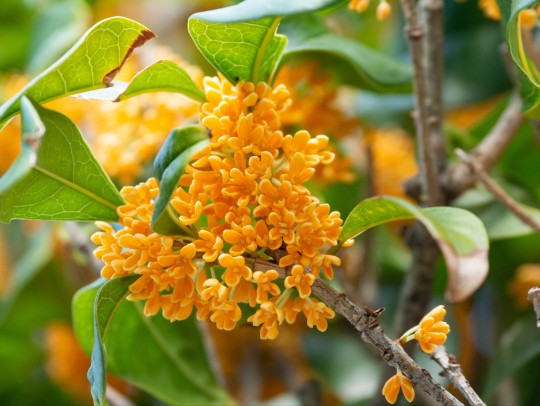
Osmanthus Wine tastes same as I remember, but where are those who share the memory XD
Origins: China
In the language of flowers, they carry the meaning of love and romance, symbolising true love and faithfulness
Smells like a mix of juicy peaches, ripe apricots with soft leather or suede.
Elaine - Lavender
Origins: Mediterranean
Represent purity, silence, devotion, serenity, grace, and calmness.
Biblical meaning of lavender symbolizes purity, devotion, and love
Delicate, sweet smell that is floral, herbal, and evergreen woodsy at the same time
Helbram - White Rose
Origins: Ancient Greece
Symbolize loyalty, purity, and innocence.
Combination of floral and fruity notes, with hints of honey and jasmine
Fun fact: A White Rose is what King used to kill Helbram (the first time) it turned red because of the blood
Gerheade - Mint
Origins: Mediterranean
Symbol of Hospitality and Wisdom
Gloxinia - Ginger
Origins: Maritime Southeast Asia
In many cultures, ginger is considered a symbol of love
Used in religious rituals to symbolize cleansing, protection and blessing.
Warm and spicy, with a hint of sweetness
Lancelot - Lemon
Origins: Unknown (said to be first grown in Northeast India, Northern Myanmar, or China)
Symbol of purity and cleansing
Headcanon Time
Since Nakaba hasn't spoken out about their scents I'll give my thoughts on the matter.
Lancelot introduced fruits into the mix of scents and Gloxinia smells like Ginger which is a root so I went ham with this.
Nasiens - Oleander or Sunflower
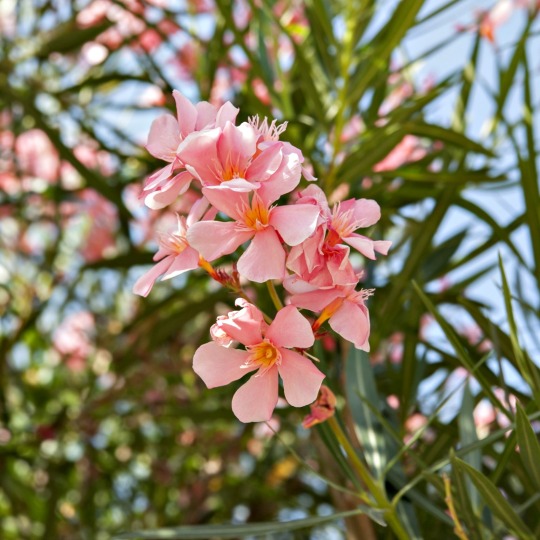
Oleander are toxic which is very fitting for our Mad Herbalist
Smells like Vanilla
Oleander symbolizes love, beauty, and resilience
I want one of Kiane's kids to smell like Sunflowers cause you know... Sunflower
Sunflowers also don't have a distinct smell so it's actually fitting for Nasiens since he grew up thinking he's human so there's really no natural fairy-like smell he could have detected from himself
Sunflower represents longevity, lasting happiness, adoration, and loyalty
Sixtus - Peach
Since Sixtus looks extremely like King I think it's only fitting if his scent is close to King's as well
Peaches symbolizes longevity
Belte - Jasmine
Belte gives Helbram energy and he kinda looks like him too so his scent also needs to give Helbram energy
Jasmine stands for purity, simplicity, modesty and strength.
Zana and Zillian - Blackberry and Raspberry
Since they're twins I want their scents to match
Blackberries are mild, sweet and slightly acidic scent, with earthy and woody nuances.
Some believed that blackberries contain properties of abundance and prosperity
Raspberries are fruity, sweet and slightly acidic
Raspberries are symbol of kindness in Christian art.
Tioreh - Pink Hyacinth
Phao - Lily of the Valley
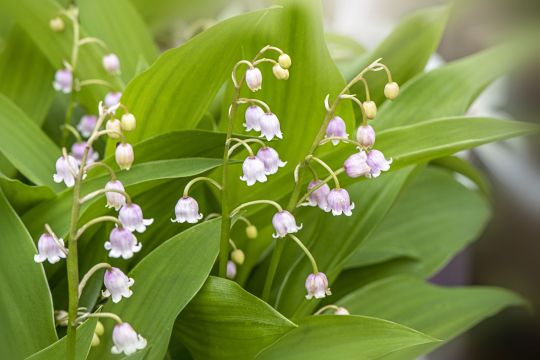
Symbol of purity, joy, love, sincerity, happiness and luck,
Has a floral and green scent, with fresh and slightly sweet notes
I want one of Kiane's kids scents to come from the earth, something underground. There's an underground Orchid but it smells bad so that won't do so I specifically looked for a flower that has an earthy scent. I also want it to be PINK for Tioreh
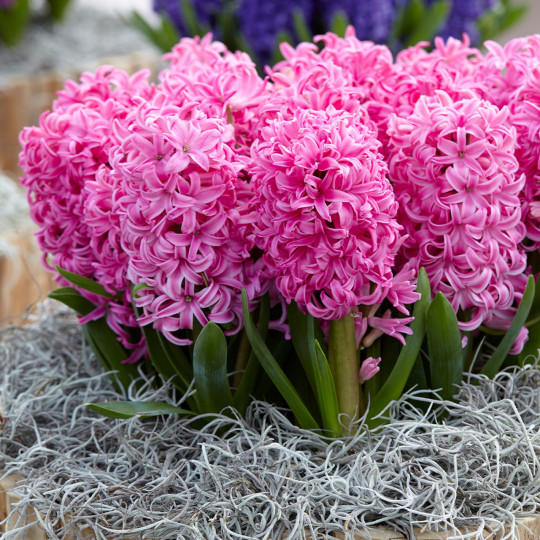
Sweet, robust, and earthy
Pink hyacinths symbolize playful joy.
#fairy scents#fairy clan#nnt king#fairy king harlequin#king harlequin#nnt elaine#Lancelot#Gloxinia#gerheade#helbram#Nasiens#Sixtus#Zana#Zillian#Belte#Phao#Tioreh#nanatsu no taizai#four knights of the apocalypse#seven deadly sins#4kota#nnt#mokushiroku no yonkishi#seven deadly sins sequel#nanatsu no taizai mokushiroku no yonkishi
43 notes
·
View notes
Text
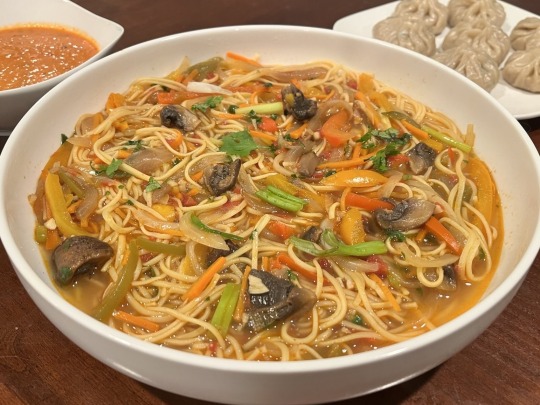
[ID: A large, shallow bowl filled with soup with orange broth, noodles, mushrooms, and bell peppers, garnished with green onion and cilantro. A plate of dumplings and a bowl of sauce are visible in the background. End ID.]
Thukpa / थुक्पा (Nepali noodle soup)
Thukpa is a Himalayan noodle soup that originated in Tibet before becoming popular in Nepal, Butan, and northeast India, where many different varieties of it are eaten in the home and as a street food. This Nepali-style version is flavored with green chilis, cumin, coriander, and ginger, and brightened with the addition of fresh herbs and lime juice. This is a warming, filling, one-pot meal, perfect for winter!
Recipe under the cut.
Patreon | Tip jar
Serves 8-10.
Ingredients:
1/2 each green, yellow, and red bell pepper, sliced
1 green hot chili pepper, slit
4 green onions, cut into 2-inch pieces
2-inch chunk ginger, minced
4 cloves garlic, minced
1 Tbsp cumin seeds, toasted and ground
1 Tbsp coriander seeds, toasted and ground
1 large or 2 small roma tomatoes, diced (150g)
250g dried thukpa noodles or Chinese wheat noodles
1/2 cup shredded cabbage
1 cup quartered button mushrooms
1 large carrot, julienned
8 cups (2L) water
1 Tbsp vegetarian chicken stock from concentrate, or 2 vegetarian chicken-flavored stock cubes (optional)
Juice of 1 lemon or lime
Bunch of garlic greens, or fresh cilantro, chopped
1 Tbsp soy sauce (optional)
Salt to taste (about 2 tsp, less if you used a stock cube containing salt)
1/2 tsp chaat masala or garam masala (optional)
Mustard oil is typically used for this soup, but you can also use any neutral oil.
Nepali thukpa noodles may be found at an Asian grocery store or purchased online. They may be labeled "Thukpa noodles" or "Himalayan noodles." Any thin wheat noodle may be used as a substitute.
Thukpa also commonly includes chicken. I have omitted it and focused on the veggies in this recipe (a lot of Nepali thukpa recipes are vegetarian!), but if you have a chicken substitute onhand you can cook it in the oil at the beginning of step 2, then remove it from the pot; return it to the soup when ready to serve.
Chickpeas, split bengal gram, or other beans are sometimes added to vegetarian versions of Nepali thukpa for protein. Add in cooked beans or grams at step 7.
Chicken stock is not usually used in this soup. I like to use a vegetarian chicken stock cube in my version to simulate the effect of boiling chicken in the soup water along with the vegetables; I think it adds a nice savor.
Instructions:
1. Boil noodles according to package directions, until they are al dente (use salted water if the noodles themselves do not contain salt). Drain noodles and rinse with cold water to halt cooking.
2. In a large pot, heat oil on medium until shimmering. Add onion and saute, agitating occasionally, 3-5 minutes until translucent. Add ginger, garlic, and green chili and fry for 30 seconds until fragrant and no longer raw-smelling.
3. Meanwhile, add half of ground coriander and cumin to a small bowl and add just enough water to form a thick paste. When garlic and ginger are fragrant, add the spice paste to the pot and cook, stirring often, until the water has evaporated to bloom the spices.
4. Add tomatoes and cook, covered, for 2 minutes until soft. Mash with the flat of a ladle.
5. Add mushrooms, carrots, cabbage, and bell peppers. Cook, uncovered, on medium low for 3 minutes, then cover and cook for another 3 minutes.
6. Add the rest of the ground coriander and cumin and stir to combine.
7. Add water (and chicken stock concentrate or cubes, if using) and bring to a boil. Cook for a few minutes until vegetables are tender and cooked through.
8. Add chaat masala or garam masala and simmer another minute.
9. Reduce heat to low. Add green onion, garlic greens, lime juice, and soy sauce and simmer for another minute.
10. Add cooked noodles (and chicken, if using) and heat until warmed through. Taste and add salt if necessary. Serve hot.
#one pot#vegetarian recipes#recipe#one pot recipes#Nepali#cooking#under an hour#bell peppers#mushrooms#green onion#tomatoes#noodles#cabbage#carrots
134 notes
·
View notes
Text

There are several countries known for having some of the healthiest cuisines in the world, characterized by fresh, whole foods, a variety of fruits and vegetables, lean proteins, and balanced flavors. Some of these countries include:
1. Japan: The traditional Japanese diet is based on fish, seafood, rice, tofu, vegetables, and fermented foods like miso and kimchi. Japanese cuisine is known for its emphasis on fresh, seasonal ingredients and simple, flavorful dishes.
2. Greece: The Mediterranean diet, which is commonly found in countries like Greece, is rich in olive oil, whole grains, fruits, vegetables, nuts, seeds, and fish. The diet is high in antioxidants, healthy fats, and fiber, and is associated with numerous health benefits.
3. Italy: Italian cuisine is known for its emphasis on fresh, high-quality ingredients such as tomatoes, olive oil, garlic, herbs, and whole grains. The Mediterranean diet, common in Italy, is associated with a lower risk of heart disease and other chronic conditions.
4. South Korea: Korean cuisine features a wide variety of fermented foods, vegetables, lean proteins, and grains. Kimchi, a staple in Korean cuisine, is a fermented vegetable dish that is rich in probiotics and has numerous health benefits.
5. India: Indian cuisine is characterized by a wide array of spices, legumes, vegetables, whole grains, and lean proteins like lentils and chickpeas. Many traditional Indian dishes are vegetarian or vegan, making them rich in plant-based nutrients.
6. Thailand: Thai cuisine is known for its bold flavors, fresh herbs, and aromatic spices. Thai dishes often feature a balance of sweet, sour, salty, and spicy flavors, and incorporate plenty of fresh fruits, vegetables, and seafood.
7. Morocco: Moroccan cuisine is rich in spices, herbs, nuts, seeds, vegetables, and lean proteins like fish and poultry. Tagines, a traditional Moroccan stew, often contain a variety of vegetables and are cooked slowly to infuse flavors.
#healthy food#food for thought#food fight#comfort food#fast food#food photography#foodie#food#foodpics#foodlover#japanese food#foodmyheart#tw food#healthy salad recipes#lunch recipes#pasta recipes#pasta recipe#salad recipes#soup recipe#recipe#reciprocity#recipies#recipes#cozy autumn#cozy fall#cozyhome#cozy cozy#cozy living#autumn cozy#cozy art
10 notes
·
View notes
Text


On the first day of Bihu -- Assamese New Year, in April -- [...] [t]he objective is to gather 101 different wild, edible plants in celebration of the beginning of the new harvest year. The oldest woman in the group, in her early sixties, can distinguish the edible plants from the nonedible ones and knows most of them by name. [...] A large handful of garlic cloves is peeled, ginger is sliced, and then a few potatoes are mixed in. One of the women heats up some mustard oil, fries the garlic, ginger, and potatoes, and then adds the large bowl of greens. [...] Wild herbs are a central part of the cuisine of Assam, a state in northeast India. Foraged, wild herbs are eaten with garden-grown vegetables [...]. Here, herbs are more than food; they are also used as herbal medicine in the local healing tradition, bon-oukhodi. Hippocrates said, “Let food be thy medicine and medicine be thy food.” In Assam, this is a literal, quotidian practice. In addition, herbs are a key ingredient in local rice beer. People drink the homemade rice beer with their meals, as nutrition, as medicine, as part of rituals, and for merriment.
In Assam, wild herbs are more than just nutritious dietary supplements or even Indigenous medicine. They are central to local traditions, identities, and Indigenous mythology.
-------
Plants in Places
Northeast India [...] is known for having some of the most diverse flora in the world. The state of Assam shares a border with Bangladesh to west and is separated from Bhutan, Tibet, and Myanmar by narrow strips of land [...]. Assam’s borders with Bangladesh and with Nagaland are both fraught. [...] The state is home to many different ethnic and Indigenous communities who mainly live in communal peace, but recent political unrest has targeted Bangladeshi communities -- often refugees -- as outsiders, with the purpose of othering [...]. In recent years, “mainland” Indian politics has made inroads into Assam [...].
Foraging for plants took place in small forests between fields and rivers, and near peoples homes in the villages. It was done on foot, and the plants were collected by hand with the help of a small sickle. Contrary to most agriculture and gardening, in these villages ingredients are collected from wild, uncultivated lands that are not tended in any way to support their flourishing.
The most popular foraged plants to eat are dhekia (fern), manimuni (pennywort), and kosua (taro). They are eaten lightly wilted, boiled and/or fried with mustard oil, garlic, and ginger, or added to dahl and meat dishes.
-------
Rice-beer brewing is common among Hindu and Indigenous communities in the region. Within these groups, rice beer is consumed by everyone, men and women alike. It is valued for its medicinal properties, as a beverage, and sometimes as part of rituals. Rice beer is not something that is ever purchased; it is only ever homemade. Making the beer requires a starter culture called pitha, which is either made at home or purchased.
The pitha is said to be made of 99 wild herbs, and those who make their own forage the herb fresh before preparing the starter.
The most highly regarded pitha makers are elderly men and women who can recognize hundreds of wild plants and know their medicinal properties. They’re able to select certain plants to give the rice beer particular flavors and medicinal properties. Different plants are also known to influence the preservative qualities of the pitha; for example, adding chili to the pitha is known to protect the beer against rice bugs.
The forests and fields where people like to forage in Assam are shrinking due to the privatization of land for development and urbanization. This is leading to a loss of tradition and identity.
-------
Deforesting Identity
Wild herbs have a spiritual dimension that is connected to identity. Communities from the Boro ethnic group in Assam say that at “the beginning” (of life, of the universe), there was algae. Then a sijou (Indian spurge) tree arose. Over time, people arrived, but “they didn’t know how to live.” Gods then materialized eighteen times to teach people things, like sewing, playing the flute and the drum, and making rice beer. Rice beer, then, is also a sacrament. At celebrations, offerings of rice, fermented areca nut, herbs, and rice beer are made to the sijou, as well as to other deities and ancestors by other communities. [...]
The loss of foraging space has implications for identity. One of my interviewees explained: “If you lose your cultural connectedness to your forest, your ecology, then you lose your identity. Now the ruling party has spoken about it very openly for everyone to hear.” Plants are seen as central to identity, to “who we are.” But plant knowledge is being lost, partly because the knowledge-holders are aging; younger and urban people don’t have the time or interest to forage. Moreover, in India it is not only food culture that is being homogenized, with foraged plants no longer having a role; identity is also being homogenized. The elimination of Indigenous and minority group via intimidation, conversion, and the deportation of those without citizenship papers has led to the systematic eradication of Indigenous groups and Muslim communities.
Food is not just food. It also involves stories, intimate connections with the environment, and the politics of how we find sustenance. Questions of destructive modernization and structural violence are inseparable from the smells and textures of herbs and fermented produce.
-------
Image and text published by: Salla Sariola. “Wild Herbs and Rice Beer in Assam.” e-flux Notes. 26 August 2022.
120 notes
·
View notes
Note
will you tell us all your head canons about harry and food?
and was there really a sourdough starter named betsy?
oh god. maybe not all bc i have so many. but here are a few:
- i swing between a harry that would love cooking and food because of how little he had it as a child, and a harry that would have issues with it for the same reason. but mostly, because i tend towards joy, i think he’d learn to love it.
- harry uses food to connect with his heritage; he finds a whole cupboard of cookbooks that fleamont and euphemia passed down to james at godric’s hollow. they’re mostly handwritten, family recipes; i love desi harry, so i imagine a whole cupboard of punjabi recipes.
- luna is the first person he cooks for because he knows she’ll be honest. she tells him that he needs to use more chilli but otherwise the chana masala is very good and she appreciates that he made her something vegetarian (harry forgot she was vegetarian but he does not tell her this)
- he makes the cake for ron and hermione’s wedding, and it changes flavour with every bite; chocolate and orange on one bite for ron, bergamot and lemon on the next bite for hermione
- harry discovers he really likes working with his hands; he takes up gardening, starts growing his own produce, lots of fresh herbs and cucumbers and potatoes and carrots and squash, and he gets so excited harvesting his produce to cook with every night
- for their first date, harry tries to take draco out to a fancy restaurant to impress him, but realises he could make it better at home anyway, and so they leave after the entree and harry makes them spicy pasta and chocolate soufflés at home, and draco knows right then that he’ll marry him
- draco buys harry spices from india because harry insists they taste different than the same spices bought in britain, and harry tells him he should really stop because it’s so extravagant, but he gets so happy cooking with them that draco never does
- food makes harry feel useful post-war. he feels like he creates rather than destroys through cooking. he loves providing for the people he loves. so he makes bulk meals for ron and hermione after rose is born so they don’t have to worry, he sends banh mi to neville when he’s working through lunch, he makes vegan ice cream for luna. the only exception is sunday lunch at the burrow, where he’s never allowed to help, and it annoys him but molly’s so insistent and endearing that he always gives in.
- harry and draco’s wedding is lovely but very overwhelming. they sneak away to eat raspberries and chocolate and gulab jamun in the gardens and harry thinks he’s so happy he might die.
- harry is a stay at home dad. his kids always have the best lunches at primary school. their friends beg for sleepovers. harry and draco love it because it makes them feel like Cool Dads.
- they have a family holiday to a new country every summer, and they make sure to try all the food of that country they possibly can. this year, they’re taking the kids to egypt.
p.s. i’ve never had a starter, but i’ve always aspired to have one. if i did, she’d be called betsy
78 notes
·
View notes
Text
I’ve been reading “Curry: A Tale of Cooks and Conquerors” by Lizzie Collingham.
It’s fascinating - for instance I had no idea that tea in India didn’t become a drink (it was purely medicinal beforehand) until after a lengthy and aggressive marketing campaign by the British-owned Indian Tea Association.
Even after tea-drinking caught on, the ITA disapproved of masala chai - an “unsavoury and badly prepared decoction” - because the inclusion of spices meant it required that much less tea...
The book includes numerous recipes, one of which follows.
I’m mildly - but only mildly - curious about whether measurement by cups means it’s a US recipe, or a UK one (noting that use of ”minced” not “ground” steak) converted for the US imprint of the book.
Either way, I don’t intend to try it.
A 1970s curry (Serves 4–6)
Ingredients:
1 lb. topside steak cut into strips (or can use minced steak)
2 large stalks celery sliced
1 tablespoon soy sauce
1 tablespoon white vinegar
1 tablespoon oil
1 tablespoon brown sugar
1 cup water
2 whole cloves
2 heaped teaspoons curry powder
2 teaspoon each of ground ginger, cinnamon, and mixed herbs
3 heaped teaspoons fruit chutney
1 cup sultanas
3 cups tomato juice
salt
8 whole black peppercorns
1 or 2 rings fresh or canned pineapple (diced)
Method:
Heat the oil in a large saucepan.
Sauté the celery and the meat until well browned.
Add the curry powder, stir, and cook for 3 minutes.
Add spices, tomato juice, chutney, soy sauce, vinegar, and sugar. Stir well.
Add remaining ingredients, stir well.
Cover and simmer for 50 minutes.
Serve with hot rice.
Celery? Soy sauce? Pineapple?
Um.
No.
41 notes
·
View notes
Note
hi again! also another tip for dealing with low iron is to use iron cookware, it's used in indian cooking to help compensate for low iron. basically the idea is that your food absorbs a bit of the iron every time you cook with it :)
though i wouldn't recommend using any acidic veggies like tomato as the food can taste a little iron-y. tbh i just tolerate it bit something to keep in mind. it's a pain to wash generally since i always hand wash it to keep it in good condition.
i think another issue is also being able to find 'fresh' produce as well. supermarkets are the most easily accessible source, but the produce is usually 'old' due to transportation and storage. once you've tasted 'fresh' veggies, you can really tell the difference. i really sympathise with you, eating healthy and ethically is really fucking hard. there's bad shit in everything you consume. unless you have the time, money, and resources to grow everything yourself it's impossible to eat 'fully clean'.
something interesting i've noticed in developing countries like africa and india is that they usually have better access to higher quality of produce which relatively cheaper. for example, you could drive for 20 mins in outer delhi and be able to buy produce fresh from the ground. there's literally roadside veggie stalls and there's a farm right behind it. likewise, for grains i could go and buy freshly milled wheat flour and grains with similar convenience.
this obviously goes for areas that are not 'rural' but even those communities have a system set up to be able to access fresh food of some sort.
sorry for the essay, i'm really excited to find someone who's also trying it eat healthy!
ohh that's really interesting! I should buy some more proper cast iron cookware . I never would've thought that there were health benefits!
yeah areas that are less industrialized seem to have much more delicious & healthy food bc it's more of a farm to table situation & the soil isn't absolutely ruined. I notice this even when I'm in more rural areas here in the US, produce from a small town farmers market & produce from my local jewel tastes SO different it's insane. I'd like to grow my own food someday. My mom has a little herb garden in our backyard & she also grows tomatoes & radishes & carrots & a few other things that are suitable for our climate & they taste better than storebought too! just a lot fresher .
#i also want to turn my garage into a greenhouse but that takes money which i do Not have#id probably grow weed in there but also veggies & fruits through the winter#asks
4 notes
·
View notes
Text
A Flavorful Showdown: Top-Rated Indian Veg vs. Non-Veg Dishes In Calgary

India's culinary heritage features a wide range of diverse flavours and traditions, offering an extensive range of authentic and mouthwatering delicacies. This rich tapestry has enticed palates from around the globe, sparking a shared fondness for Indian cuisine, whether vegetarian or non-vegetarian. People from all across the world have started growing a liking for Indian dishes in both veg and non–veg. However, some people prefer the former and vice versa. This notion has led to a great debate among people-what are better veg dishes or non-veg dishes? Both these Indian dishes have their special quality both are equally appealing in taste and preparation method, authenticity, and culinary history.
However, this culinary mystery is often the stem of lively debates among various food enthusiasts, giving rise to questions like “Which is better? Veg or non-veg?”. So we decided to clear your confusion and shed some light on some of the most delicious vegetarian and non-vegetarian dishes in Clagary and the best place to eat in the region.
The Art Behind Indian Vegetarian And Non-vegetarian Dishes
Traditional Indian cuisine features its charm through a blend of diverse cultures, distinct flavours, and the generous use of a wide variety of herbs and spices. Each region in India offers a wealth of delicious and unique dishes enjoyed by people globally. The category of Indian food includes both vegetarian and non-vegetarian delights, and the diversity within these categories is truly mind-blowing. Both these culinary creations make use of fresh ingredients, with vegetarian dishes featuring vegetables, legumes, grains, and dairy, while non-vegetarian options feature meats, poultry, and seafood. The excellence and freshness of these ingredients ensure the crafting of the desired flavours that define Indian cuisine. The cooking techniques employed in both categories vary. Veg dishes often involve sautéing, simmering, or roasting, while non-veg dishes may include grilling, marinating, and slow cooking. The methods used play a significant role in infusing flavours into the dishes.
Both veg and non-veg dishes offer a balance of flavours. This balance involves getting the right amount of sweetness, saltiness, sourness, bitterness, and umami, depending on the type of dish.
Top 5 Indian Vegetarian Dishes You Must Try
For our vegetarian enthusiasts, we've thoughtfully prepared a selection of the most cherished items from the Indian vegetable menu. These dishes are not only a delight for vegetarians but are also enjoyed by those who appreciate both vegetarian and non-vegetarian fare. Take a moment to explore these flavorful options.
Aloo Gobhi
Aloo Gobhi is one of the most beloved dishes in the Indian cuisine. This lip-smacking vegetarian dish features tender florets of cauliflower and sliced potatoes cooked in a delicious blend of Indian spices including turmeric, cumin, and coriander, which infuse the vegetables with a rich, earthy aroma.
Aloo Gobi strikes the perfect balance between soft and slightly crisp textures, making it a favourite comfort food in Indian households. It is often garnished with fresh cilantro and served alongside fluffy naan bread or steamed rice.
2.Palak Paneer
This vegetarian dish has grown fans from all across the world. The healthy Palak Paneer features cubes of paneer (Indian cheese) and Palak (spinach) in aromatic Indian spices and herbs. The spinach leaves are blended into a fine paste that gives out a vibrant green hue. This green sauce of spinach is sauteed and stir-fried in a pan and then paneer cubes are added to it. The spices used, such as cumin, garam masala, and coriander, infuse the dish with a mild, earthy warmth. Palak Paneer is not only a feast for the taste buds but also a healthy choice, as spinach is packed with nutrients and vitamins.
3. Mutter Paneer
Another classical Indian vegetarian dish, the delicious Mutter Paneer features Mutter (green peas) and Paneer (Indian cheese). The dish is prepared by sautéing paneer cubes in a rich tomato-based gravy, which is infused with a medley of aromatic spices such as cumin, coriander, and garam masala. The addition of green peas adds a sweet and earthy element to the dish.
Mutter Paneer is a popular choice among vegetarians and often finds its place on restaurant menus and dinner tables across India and beyond.
4.Channa Masala
Probably one of the best authentic Indian food in Calgary, the Channa Masala is also known as Cholle Masala. Channa (chickpeas) are simmered in a spiced onion and tomato-based gravy. The preparation starts with a blend of fragrant spices, such as cumin, turmeric, red chilli powder, coriander, and garam masala, which are used to create a thick and fragrant gravy. The chickpeas are then added to this gravy, absorbing the flavours and creating a delicious, protein-rich dish.
Channa Masala is known for its diverse, spicy flavours, and it's often topped with fresh coriander leaves and served with naan, roti, or rice.
5. Sweet And Sour Eggplant
Sweet & Sour Eggplant is a dish that features the unique flavours of sweet and tangy in a vegetarian delight. This dish features slices of eggplant, which are coated in a light batter and then fried until they achieve a crispy, golden-brown texture.
The "sweet and sour" flavour comes from the sauce which includes ingredients such as vinegar, sugar, and soy sauce. This sauce is infused with a blend of flavours, ranging from the sweetness of sugar to the tanginess of vinegar. It creates a contrast to the crispy eggplant, resulting in a saucy and slightly sweet coating that complements the eggplant's mild flavour.
Top 5 Non-Vegetarian Dishes You Must Try
No need to fret, dear non-vegetarian food enthusiasts! We've put together an enticing culinary collection of some of the finest Indian non-vegetarian dishes that are sure to leave you craving for more. Without further ado, here they are:
Tandoori Chicken
Your mouth starts watering thinking of this dish! Doesn’t it? undoubtedly, tandoori chicken has rightfully earned its reputation as one of the most beloved Indian non-vegetarian dishes. This dish features tender and juicy pieces of chicken, marinated in a blend of yoghurt and fragrant Indian spices and herbs.
The marinated chicken is then cooked in a tandoor (clay oven) that infuses a smoky and charred flavour to the meat. Tandoori Chicken is known for its bold and smoky flavours, with the yoghurt-based marinade adding a creamy and tangy element.
2. Chicken Tikka Masala
Chicken Tikka Masala is a much-loved Indian non-vegetarian dish that has achieved international credit for its rich flavours. This dish consists of juicy pieces of chicken, usually marinated in a spiced yoghurt blend imparted with ingredients like cumin, coriander, and garam masala. The marinated chicken is then roasted, grilled, or baked to perfection. It is traditionally served in a tangy tomato-based gravy topped with cream and spices, including cumin, paprika, and fenugreek.
3. Lamb Vindaloo
Lamb Vindaloo is a spicy Indian curry known for its spicy flavours and tender pieces of lamb. This dish originates from the Goan region of India and portrays the influence of Portuguese cuisine. The lamb is marinated in a mixture of spices such as cumin, coriander, turmeric, and red chillies, along with vinegar or tamarind, which provides the dish with a tangy kick. The marinated lamb is slow-cooked in a tomato-based gravy, creating a rich sauce.
4. Prawn Malai Curry
Prawn Malai curry is a deliciously creamy seafood dish that originates from the coastal region of India. This dish is prepared by taking plump prawns marinated in a blend of aromatic herbs and spices including turmeric, cumin, and coriander, which impart a subtle and aromatic warmth to the curry.
5. Chicken Biryani
Another popular Indian dish is the delectable non-vegetarian rice dish popularly known as Chicken Biryani. The preparation begins with marinating the chicken in a blend of spices, including cumin, coriander, and garam masala. The marinated chicken is then layered with partially cooked rice in a heavy-bottomed pot. This pot is then sealed to trap the steam and allow the ingredients to cook together, infusing the rice with the rich flavours of the chicken and spices.
Where to Find the Best Indian Food In Calgary?
Calgary is home to some of the best restaurants to eat in the region. You can easily order Indian food online or dine in according to your mood and preference. If you’re planning to try some of the most amazing dishes in the area, we suggest you try Gate of India, an East Indian restaurant that specialises in serving traditional Indian food from various regions in the country. Their preparation method is very hygienic and they strongly believe in sourcing their ingredients from local vendors.
The usage of authentic Indian herbs and spices makes their dishes all the more special. You can order Indian food online from this restaurant or dine in as per your choice and taste tradition like never before.
2 notes
·
View notes
Text
Hydroponic Vegetables Online in Delhi NCR | Inhydrogreens

Hydroponically grown vegetables retain their freshness and flavor for much longer. This means that when you buy Hydroponic vegetables online, such as leafy vegetables in Delhi, or buy herbs online, they stay fresh for longer periods of time and don’t need to be used immediately. Moreover, this makes them ideal for a monthly salad subscription in Delhi, as you can be sure that your produce will stay fresh throughout the entire month.
#Salad box online#Hydroponic Salad Box Online#Salad box near me#Fresh salad box#Leafy greens in india#Leafy Greens Salad Box#Leafy Green Basket#Best leafy greens#Fresh herbs in india#Microgreen salad near me#Buy microgreens#Fresh herbs vegetable#lExotic veggies online#Exotic Vegetable Basket#Exotic vegetables in india
0 notes
Text
Best Ayurveda treatment for cholesterol
Ayurveda does not view cholesterol in the same way that Western medicine does. Medas is a dhatu (tissue) in Ayurveda that may be related to cholesterol or adipose tissue and may support various circulatory channels (shrotas) within the body.
There are two kinds of shrotas:
Sukshma shrotas (subtle)
Sthula shrotas (heavy).
While micro shrotas help transport nutrients and waste to and from cells, larger shrotas (veins and arteries) transport blood into and out of the heart. Cholesterol plays an important role in this process by lubricating the channels.
So, healthy cholesterol is not only important for health, but it is also necessary. However, when Ama (toxins) levels in fat tissue rise, the channels may become clogged. A more dangerous type of Ama, known as Amavisha, develops when Ama is present in the body for an extended period of time. When Amavisha is not cleansed for an extended period of time, it may begin to mix with the dhatu (body tissues) and mala (waste). This mix-up could harm the shrotas and lead to health issues like high cholesterol, heart problems, high blood pressure, and stroke.
However, Ayurveda recognizes that high cholesterol levels can lead to various health issues, including heart disease and stroke. According to Ayurvedic practitioners, high cholesterol is caused by an imbalance in the body’s doshas, particularly the Kapha dosha.
Ayurveda recommends a combination of dietary and lifestyle changes, as well as the use of natural remedies, to manage high cholesterol levels. Ayurveda recommends reducing the consumption of fatty and oily foods, increasing the consumption of whole grains, fruits, and vegetables, and incorporating more spices and herbs into the diet.
Regular exercise, stress management techniques, and the use of natural remedies such as herbs like Guggulu, arjuna, and shilajit, which have traditionally been used to lower cholesterol levels, are also recommended by Ayurveda.
It should be noted that Ayurveda should only be practiced under the supervision of a qualified Ayurvedic practitioner and should not be used in place of conventional medical care.
AYURVEDIC TREATMENT FOR CHOLESTEROL MANAGEMENT / Best Ayurveda treatment for cholesterol
Ayurveda, a traditional system of medicine from India, offers various treatments and lifestyle recommendations for managing cholesterol levels. Here are some Ayurvedic approaches that may help:
Diet: Follow a balanced and nutritious diet that includes whole grains, fresh fruits, vegetables, legumes, and lean proteins. Avoid processed foods, fried foods, excessive salt, and sugar.
Herbal Remedies: Arjuna (Terminalia arjuna): This herb is known for its cardioprotective properties and may help lower cholesterol levels. b. Guggul (Commiphora mukul): Guggul is commonly used in Ayurveda for managing high cholesterol. It helps reduce bad cholesterol (LDL) levels while increasing good cholesterol (HDL) levels. Triphala: This herbal blend, consisting of three fruits (Amalaki, Bibhitaki, and Haritaki), is believed to have cholesterol-lowering effects and promotes overall well-being.
Lifestyle Recommendations Regular Exercise: Engage in physical activities such as walking, jogging, yoga, or any other form of exercise for at least 30 minutes a day to improve metabolism and manage cholesterol levels. Stress Management: Practice stress-reducing techniques such as meditation, deep breathing exercises, or yoga to lower stress levels, which can contribute to high cholesterol. Weight Management: Maintain a healthy weight as excess weight can contribute to high cholesterol levels.
4. Ayurvedic Treatments: Panchakarma: Panchakarma is a detoxification and rejuvenation therapy that may be recommended by Ayurvedic practitioners to eliminate toxins from the body and promote overall health. Abhyanga: This is a form of Ayurvedic massage using warm herbal oils. It is believed to improve circulation, reduce stress, and support overall well-being.
Changes in Diet and Lifestyle / Best Ayurveda treatment for cholesterol
As previously stated, it is critical to manage Kapha in order to control cholesterol. In this case, a Kapha-balancing diet is essential. Furthermore, a sedentary lifestyle may be harmful to one’s cholesterol levels. Excess calories, quitting smoking, reducing alcohol consumption, and engaging in regular workouts can all help your body eliminate toxins. This can lower your body’s Ama levels. As a result, Amavisha will decrease, allowing cholesterol to lubricate and support the nutrient transportation and waste elimination processes more efficiently.
Heat therapy can also aid in the reduction of LDL (bad cholesterol) levels in the body.
Drink Green Tea
Green tea contains a lot of polyphenols. These are chemical compounds that aid in blood pressure control and the health and flexibility of blood vessels. This promotes proper blood flow throughout the body. Drinking green tea twice a day can provide significant benefits because polyphenols not only help lower LDL cholesterol but can also increase HDL levels in the body.
The removal of bad cholesterol aids in keeping your shrotas clean, lubricated, and flexible.
Coriander Seeds
Coriander seeds have long been included in a variety of Ayurvedic remedies. This is due to the high levels of folic acid, vitamin A, and vitamin C in these seeds. Because of these nutrients, coriander seeds are an excellent remedy for hastening your body’s detoxification process. In terms of application, you can soak one teaspoon of coriander seeds in a glass of water overnight. You can remove the seeds in the morning and drink the water sip by sip. When consumed on a regular basis, this can help cleanse your system and remove excess Ama.
Coriander also has Kapha balancing properties, which can help with cholesterol management.
Fenugreek Seeds
Methi seeds, also known as fenugreek seeds, have long been used to flavor food. However, its applications extend beyond that. Since ancient times, fenugreek seeds have been used for their medicinal properties. This seed is high in Vitamin E and has anti-diabetic, antioxidant, and anti-inflammatory properties.
Saponins are abundant in fenugreek seeds. These glycosidic compounds aid in the elimination of bad cholesterol from the body, thereby improving blood flow. Half a spoon of fenugreek seeds, taken twice a day, can help with all types of cholesterol issues.
An Amla Every Day
Amla, also known as Indian gooseberry, is a fruit native to the Indian subcontinent. Amla’s high Vitamin C and polyphenol content is one of its best qualities. And we can see how it would be ideal for dealing with the effects of high cholesterol.
A study published in the Indian Journal of Pharmacology estimated its efficacy and potential. According to the research, Amla’s cholesterol-lowering effects can be compared to those of clinically prescribed drugs.
To reap the benefits, consume at least one to two Amla fruits per day. This could be your ideal Ayurvedic cholesterol treatment.
Foods to Avoid If You Have High Cholesterol / Best Ayurveda treatment for cholesterol
High cholesterol is a health condition that is largely determined by the foods you consume or do not consume. While the foods mentioned in the preceding sections can help manage and lower cholesterol, the foods listed below can worsen it.
Avoid eating the following foods to help manage your cholesterol:
Processed or deli-style meats (such as gammon, bacon, and salami)
Foods that have been deep-fried.
Foods that have been processed (such as biscuits and pastries).
Pizzas and burgers are examples of fast food/junk food.
Meat fats and chicken skin.
Copha, ghee, and lard.
Oil from palm trees.
Herbal Supplements to Lower Cholesterol
Previously, Ayurveda linked cholesterol imbalance to Kapha dosha. According to Ayurveda, when Kapha levels in the body fall below optimal and Ama levels rise, toxins mix with the tissues and attack the shrotas.
Ayurvedic medicine, on the other hand, has a list of herbs that are said to have the potential to manage high cholesterol conditions. While it may be difficult to find herbs that quickly lower cholesterol, the following herbs may help manage it:
Haritaki, Guggul, Amalaki, Shilajit (Suddha), Bibhitaki, Arjuna, and Triphala are all commonly used herbs in Ayurveda for their various medicinal properties. Here’s a brief explanation of each:
Haritaki:
Also known as Terminalia chebula, Haritaki is a fruit that has been used in Ayurvedic medicine for centuries. It is considered a powerful rejuvenating herb and is used to treat a variety of ailments, including constipation, respiratory issues, and digestive problems. Haritaki is also believed to have anti-inflammatory, antioxidant, and anti-bacterial properties.
Guggul:
Guggul is a resin derived from the Commiphora mukul tree and is commonly used in Ayurvedic medicine to treat high cholesterol, obesity, and arthritis. It is believed to have anti-inflammatory and antioxidant properties, and studies have shown that it can help lower cholesterol levels.
Amalaki:
Also known as Indian Gooseberry, Amalaki is a fruit that is rich in Vitamin C and has been used in Ayurveda for its various medicinal properties. It is believed to have anti-inflammatory and antioxidant properties and is commonly used to treat digestive issues, respiratory problems, and skin disorders.
Shilajit (Suddha):
Shilajit is a sticky resin found in the Himalayan mountains and is commonly used in Ayurvedic medicine as a general tonic. It is believed to have anti-inflammatory and antioxidant properties and is used to treat a variety of conditions, including fatigue, stress, and high blood pressure.
Bibhitaki:
Bibhitaki is a fruit that is commonly used in Ayurveda to treat digestive issues, respiratory problems, and skin disorders. It is believed to have anti-inflammatory and antioxidant properties and is also used as a rejuvenating herb.
Arjuna:
Arjuna is a tree whose bark is commonly used in Ayurvedic medicine to treat cardiovascular problems. It is believed to have anti-inflammatory and antioxidant properties and is used to strengthen the heart, reduce blood pressure, and improve circulation.
Triphala:
Triphala is a combination of three fruits – Amalaki, Haritaki, and Bibhitaki – and is commonly used in Ayurvedic medicine as a digestive tonic. It is believed to have anti-inflammatory and antioxidant properties and is used to treat constipation, digestive issues, and skin disorders. Triphala is also believed to have a rejuvenating effect on the body.
#near by ayurveda hospital#near me ayurvedic doctor#near by ayurvedic clinic#best ayurvedic hospital near me
2 notes
·
View notes
Text
Indian habits that are actually good for your health
Reading time- 4 mins
Since childhood, we have been following certain habits and rituals without ever questioning why we are doing it in the first place. People are working late at night, eating irregular meals, and consuming processed and junk foods in the name of modern living. In this rush of our modern life, we have entirely forgotten the small things our grandmothers taught us or made us do.
While each of these rituals has stood the test of time, it is only because they had a scientific reason behind it. India, a land of diverse cultures and traditions, is a treasure trove of habits and customs that not only enrich our lives but also promote mental, physical, and spiritual well-being.
Let's take a journey back in time to explore some of these timeless Indian habits that can rejuvenate our minds, bodies, and souls:
Morning Rituals: In India, our elders have always taught us to start the day by greeting the rising sun. The dawn is greeted with rituals that set a positive tone for the day. The practice of rinsing your face and eyes with cool water upon waking not only refreshes your senses but also stimulates blood circulation. The age-old tradition of performing Surya Namaskar (Sun Salutation) is a gentle yet invigorating yoga routine that flexes your muscles, calms your mind, and welcomes the day with renewed energy.
Healthy Eating: Having home-cooked Indian meals has been a habit inculcated in us since childhood. Indian households have long relied on the power of herbs and spices for their medicinal properties. Turmeric, with its anti-inflammatory benefits, finds its way into curries and healing concoctions. Holy basil, or tulsi, is revered for its stress-reducing and immune-boosting properties. Incorporating these natural remedies into your diet can fortify your health and enhance your vitality.
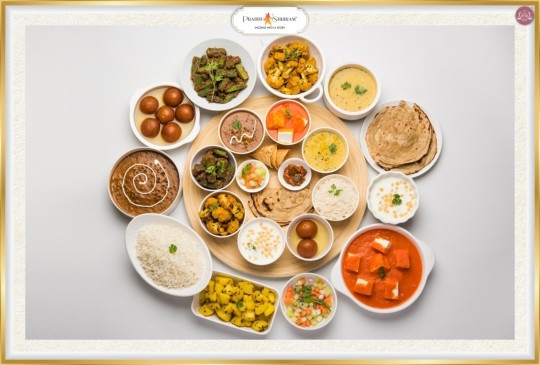
Eating with your hands: Indian meals are not just about satisfying hunger; they are an experience that engages all 5 senses. The practice of eating with your hands, as per tradition, connects you with your food, encourages slower eating, and aids digestion.
Practicing Gratitude: Indian traditions place great emphasis on gratitude. Daily prayers and offering thanks for the blessings in life cultivate a positive mindset and nurture your soul. Taking a few moments each day to acknowledge the abundance in your life can shift your focus from worries to appreciation, fostering a sense of mental calmness and emotional well-being.
Connection with Nature: India's reverence for nature is woven into its cultural fabric. Taking leisurely walks in green spaces, practicing yoga outdoors, or simply meditating under a tree can reconnect you with the natural world. This practice not only improves physical health through fresh air and movement but also rejuvenates the spirit.
Festivals and Celebrations: When we were young, Diwali meant a celebration with our entire friends & family including our most distant relatives. India's diverse festivals bring communities together in a celebration of life, traditions, and unity. Participating in these festivals fosters a sense of belonging and shared identity. The joy and camaraderie experienced during these events can have a positive impact on mental health, reducing feelings of isolation and promoting a sense of happiness.
Daily Prayers & Chanting Mantras: It is customary in a Hindu household to light a ghee diya and offer incense sticks while performing aarti every evening. Chanting mantras or sacred sounds can have a calming effect on the mind, reducing stress and promoting inner tranquility and the calming aroma of incense sticks removes negativity or blockages from your life.

Our traditions and rituals make us unique. They serve as the foundation of a strong value system that guides us on the path of righteousness and nurtures noble qualities. They help us find our true identity and create a feeling of belongingness. Our brand Prabhu Shriram was conceived for the bigger purpose of spreading happiness and peace of mind in today’s chaotic world.
Each fragrance has been curated after thorough scientific research to eliminate negative energies from your life & your house as a whole. Experience fragrances
2 notes
·
View notes
Text



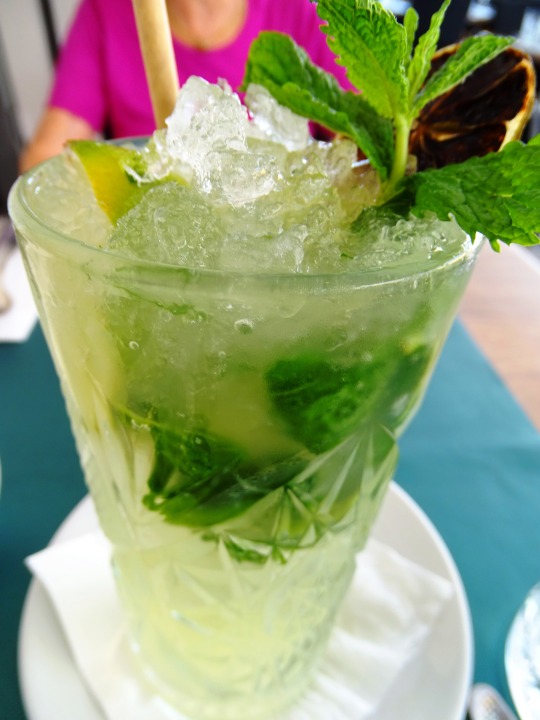

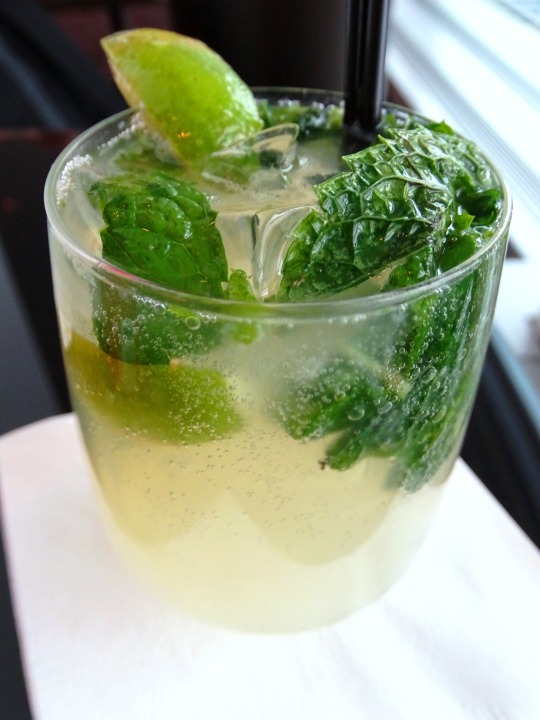







National Mojito Day
National Mojito Day on July 11 deserves a drink, so let’s toast. What more do you need on a hot summer’s day than to cool off with this classic minty cocktail? The mojito ranks among the nation’s favorite cocktails and is traditionally made with white rum, lime juice, sugar, mint, and sparkling water. It’s a cocktail that is enjoyed for its fresh and unique taste and although the recipe has been revamped many times over with herbs and fruits the classic is still the most adored. So, there’s only one thing left to do. Fill up your glass, put your feet up, and enjoy a mojito or two (we won’t judge) in the sun.
History of National Mojito Day
The mojito is a Cuban creation dating back to 1586. An old tale claims that Sir Francs Drake was seeking out a cure for scurvy and dysentery after his invasion of Cartagena de Indias on his way to Cuba. He returned with a solution – the mojito. It included aguardiente (a distilled South American liquor), mint, and sugarcane. The unusual concoction went down a treat with his crew and many reported reduced symptoms. That mojito was said to be created on La Bodeguita del Medio, an island in Cuba with a bar that the owners still to this day claim was the birthplace of the mojito.
In 1931, a ‘‘Sloppy Joes Havana Bar’’ gave away a cocktail menu and listed on it was a pair of mojito’s – one with gin, one with rum. The recipe was then published in the ‘‘El Floridita Cocktail Book’’ in 1939. Since then, the drink has grown in popularity.
The drink’s rise in popularity in the early 20th century is partly attributed to the author Ernest Hemmingway. It was rumored to be his favorite drink. The mojito is a drink that has become synonymous with summer. It’s fresh taste and cool temperature mixes perfectly with a hot summer’s day. A survey in 2016 found that the mojito was the most popular cocktail in both France and Britain.
National Mojito Day timeline
1500s The Draque Remix
Francis Drake mixes lime, sugar, and mint and calls it ‘‘El Draque’’ as a medicinal mixture.
1800s Havana Ooh Na Na
The mojito is popular in Cuba and the drink becomes refined over the next hundred years.
1930s Boisson
The likes of Brigitte Bardot, as well as other celebrities, admit their love for the drink.
2002 The Name’s Bond
Pierce Brosnan drinks a mojito in ‘‘Die Another Day’’ popularizing the drink.
National Mojito Day Activities
Make your own mojito
Create your own mojito ice cream
Try Mojito cupcakes
Follow the original recipe or be creative and add other ingredients according to your mood. For the classic, put together lime juice, rum, sugar, syrup, soda, and mint. Add some crushed ice and stir. Put it in a pitcher and share it with your guests.
Blend some condensed milk and whipped cream and voila! These two ingredients will freeze without needing an ice cream maker. Then later add 150ml of rum, four limes, and fresh mint leaves.
Try making mojito cupcakes using recipes online. A popular approach is to create a lime-flavored cupcake with a mint-lime syrup covered in rum and lime buttercream. This will impress even the most skeptical guests.
5 Facts About National Mojito Day
Seven, twenty-four seven
Cuban in London
Birth Tattoo
Prime of Lime
Hemingway’s Havana
National Mojito Day also falls on 7 Eleven Day too.
Cubana in Waterloo, London, is the home of highly recommended Mojitos and Cuban food.
“My Mojito in La Bodeguita, My daiquiri in El Floridita” is engraved at the drink’s birthplace in Cuba.
It was discovered that lime juice by itself would have cured the scurvy, but people believed that it was the cocktail that did the trick.
Ernest Hemingway lived in a villa in Havana for years which is where the rumor of his love for a mojito comes from.
Why We Love National Mojito Day
Mojitos mean celebrate
Mojitos mean summer
Rich recipes
In the summer months, mojito’s mean celebration. Whether that be celebrating the summer, a family occasion, a birthday, or just a barbecue, it’s the perfect drink for an outdoor party or gathering.
Mojitos are so synonymous with the summer that if you’re drinking one then you know the weather is good and it’s time to relax and enjoy yourself
The recipes are endless. From pineapple ginger mojitos to lychee basil and peach, the choice is never-ending. Create your own concoction and share it with your friends.
Source
#Strawberry Mojito#Sweet Tea Mojito#cocktail#don't drink and drive#USA#Portugal#travel#original photography#vacation#National Mojito Day#11 July#peppermint#lime#lemon#ice cube#NationalMojitoDay
2 notes
·
View notes
Text

[ID: A large, shallow dish full of golden brown rice with chickpeas, bits of tomato, and whole spices; it is garnished with mint and sliced almonds. End ID.]
Chana pulao (Pakistani-style rice and chickpea dish)
Chana pulao is a simple, tasty vegetarian staple common throughout various regions of India and Pakistan. It is often prepared during Muharram, the first month of the Islamic calendar, but may be prepared year-round. Fragrant, fluffy basmati rice is cooked with aromatics, chilis, tomatoes, pungent spices, and herbs in this filling, one-pot meal.
Recipe under the cut!
Patreon | Tip jar
INGREDIENTS:
2 cups (240g) cooked chana (chickpeas / garbanzo beans)
2 cups (360g) dried basmati rice, rinsed and soaked
3 cups (710mL) water
1 shallot, sliced
2 roma tomatoes, diced (optional)*
2 green chilis, slit
1 green chili, sliced
10 mint leaves, chopped
1-inch chunk (10g) fresh ginger, julienned
4 cloves garlic, chopped and crushed
3 Tbsp neutral oil
Sliced almonds, fried in neutral oil until golden brown, to garnish (optional)
Whole spices:
2 Indian bay leaves (tej patta)**
3 pieces Ceylon / true cinnamon bark (dalchini), or substitute cassia cinnamon
2 green cardamom pods (elaichi)
2 Indian black cardamom pods (badi / kali elaichi)
1 star anise pod (chakri phool)
1 tsp cumin seeds (jeera)
1/4 tsp black peppercorns
5 cloves (laung)
2 Tbsp fennel seeds (saunf)
2 Tbsp coriander seeds (dhania)
1 dried red chili pepper, crushed, or 1 tsp red chili flakes
Ground spices:
1/2 tsp ground turmeric
2 tsp salt
1 tsp Indian chili powder (ground mirchi)***
1 tsp garam masala
All of these spices can be purchased whole or ground at an Asian or halaal grocery store. If you don't have any of the spices, you may omit them. Star anise and fennel both have a licorice-like aroma and may be substituted with each other or with aniseed. Black cardamom has a strong, smoky, camphorous aroma--if you don't have any, just use a bit more green cardamom, cinnamon, and clove.
*Tomatoes are a common add-on but are not strictly traditional in this dish. Add them in for the tangy flavor and additional color, or omit them for lighter, fluffier rice.
**Indian bay leaves are distinct from Turkish or California laurel bay leaves and have a different taste and fragrance. They will be labelled "tej patta" in an Asian or halaal grocery store, and have three vertical lines running along them from root to tip, rather than radiating out diagonally from a central vein. Omit these if you don’t have any.
***Mirchi is made from dried and ground red chilis and is distinct from chili powder, which contains various spices and dried aromatics in addition to ground chilis. Substitute with more red chili flakes, or with another ground red chili powder such as prik bon.
Instructions:
1. If using dried chickpeas: allow a cup (175g) of dried chickpeas to soak in plenty of cool water overnight (or quick soak by placing in a pot and covering in several inches of water, bringing to a boil, removing from heat and allowing to soak for an hour). After soaking, drain chickpeas and place in a pot covered by several inches of water; bring to a simmer and cook for an hour or two until tender. Optionally add a few crushed cloves of garlic, half an onion, and a bay leaf in with the water to flavor the chana.
2. Rinse rice in several changes of cool water until the water runs mostly clear. Cover it with cool water and allow to soak for about half an hour while you prepare the produce and spices.
3. Prepare your produce. Slice shallot by cutting the stem end off, placing each lobe flat-side-down, and slicing horizontally (perpendicular to the root). Dice tomatoes and cut a slit vertically in two green chilis; slice another green chili horizontally. Wash ginger (or peel it, if the peel seems particularly thick or tough) and julienne by slicing thinly in one direction to produce discs, then slicing the discs thinly in another direction to produce matchsticks. Roughly chop garlic and crush it with the flat of your knife. Rinse and roughly chop mint.
4. Heat a few Tbsp of a neutral oil on medium in a large, deep pan. Sauté larger whole spices--cardamom pods, star anise, cinnamon, cloves, and black peppercorns--for 30 about seconds until fragrant. Add smaller seeds (coriander, fennel, and cumin) and fry for another minute until fragrant and a shade darker.
5. Add shallot and fry, agitating often, until golden brown. Add ginger, garlic, green chilis (sliced and whole), and crushed red chili / chili flakes and sauté for 30 seconds until fragrant.
6. Add ground spices and mint and sauté for a few seconds, stirring constantly, until fragrant.
7. Add tomatoes and sauté for several minutes until water has evaporated.
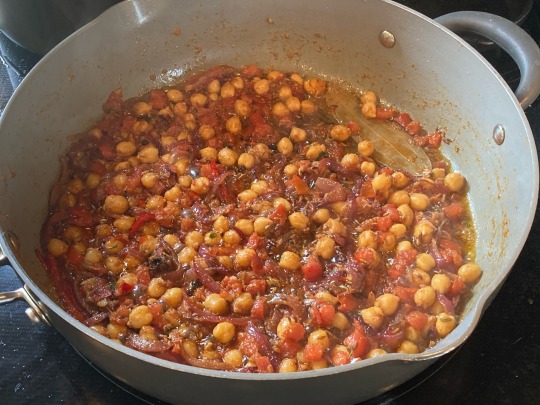
8. Reduce heat to low. Add water, chickpeas, and rice and cook, covered, until rice has absorbed all of the water, 15-20 minutes. If your pan tends to stick or has a thin bottom, stir occasionally.
9. Allow to steam without removing the lid for another 5-10 minutes. Fluff and serve warm. Garnish with sliced almonds, cashews, mint, or lemon as desired.
#vegan#vegetarian#cooking#vegan recipes#chana pulao#rice#basmati rice#garbanzo beans#chickpeas#tomatoes#mint#almonds#Indian#Pakistani#gluten free#Muharram#one pot#under an hour#if you’re using canned beans that is
204 notes
·
View notes